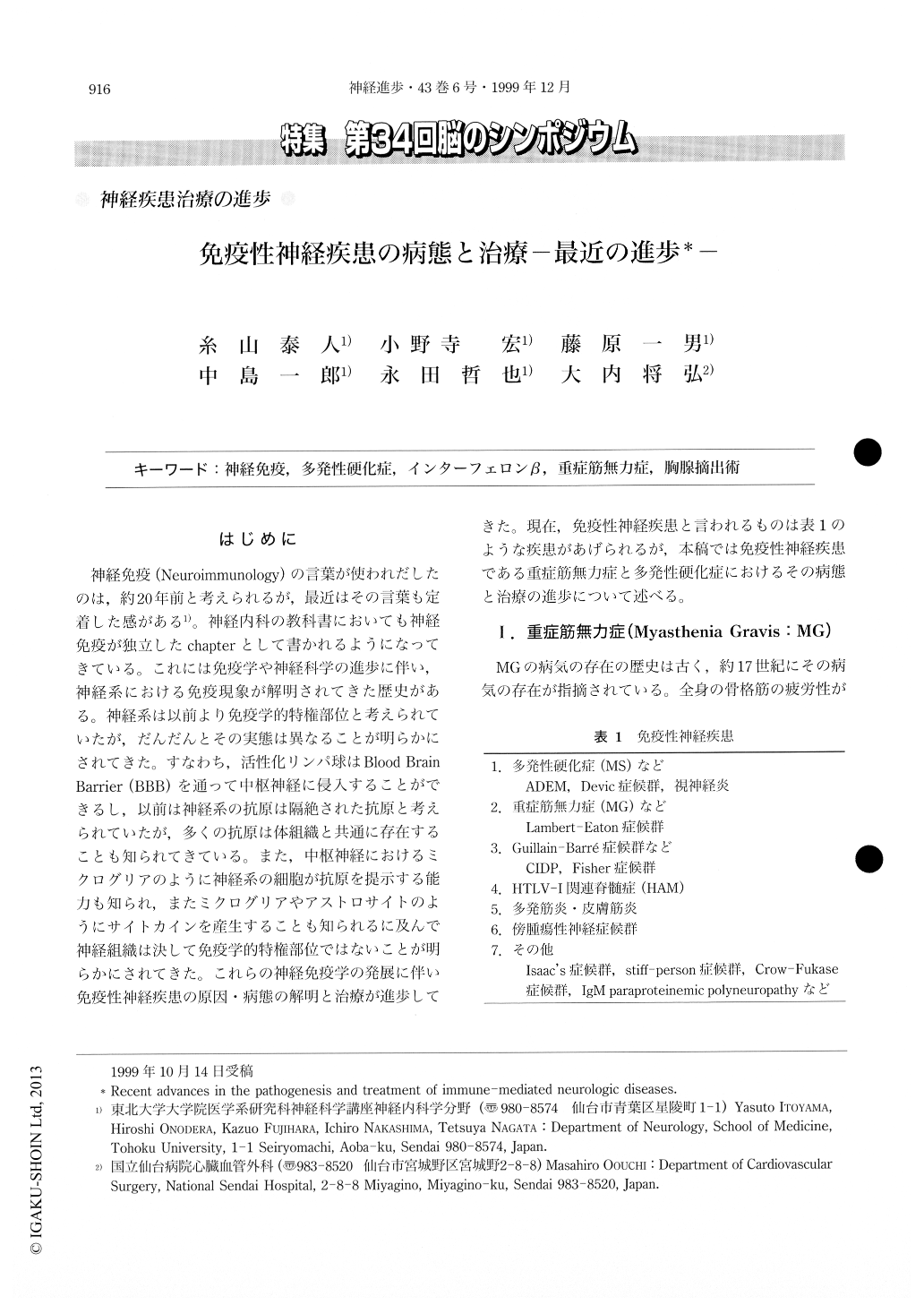Japanese
English
- 有料閲覧
- Abstract 文献概要
- 1ページ目 Look Inside
はじめに
神経免疫(Neuroimmunology)の言葉が使われだしたのは,約20年前と考えられるが,最近はその言葉も定着した感がある1)。神経内科の教科書においても神経免疫が独立したchapterとして書かれるようになってきている。これには免疫学や神経科学の進歩に伴い,神経系における免疫現象が解明されてきた歴史がある。神経系は以前より免疫学的特権部位と考えられていたが,だんだんとその実態は異なることが明らかにされてきた。すなわち,活性化リンパ球はBlood BrainBarrier(BBB)を通って中枢神経に侵入することができるし,以前は神経系の抗原は隔絶された抗原と考えられていたが,多くの抗原は体組織と共通に存在することも知られてきている。また,中枢神経におけるミクログリアのように神経系の細胞が抗原を提示する能力も知られ,またミクログリアやアストロサイトのようにサイトカインを産生することも知られるに及んで神経組織は決して免疫学的特権部位ではないことが明らかにされてきた。これらの神経免疫学の発展に伴い免疫性神経疾患の原因・病態の解明と治療が進歩してきた。現在,免疫性神経疾患と言われるものは表1のような疾患があげられるが,本稿では免疫性神経疾患である重症筋無力症と多発性硬化症におけるその病態と治療の進歩について述べる。
This paper provides an overview of recent advances in the pathogenesis and treatment of immune-mediated neurologic diseases, especially myasthenia gravis (MG) and multiple sclerosis (MS). Over the last thirty years, autoimmune pathophysiology of MG has been well elucidated with the recognition of antibodies directed against the nicotinic acetylcholine receptor (AchR). There is a high incidence of thymic abnormalities in patients with MG, and the role of the thymus is important in initiating and maintaining the autoimmune response (production of anti-AchR antibodies).

Copyright © 1999, Igaku-Shoin Ltd. All rights reserved.


